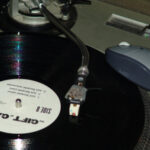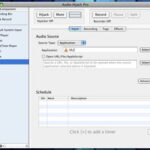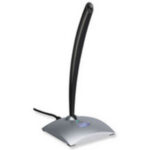Do your words sound muffled or smothered when you listen back to your recordings? This is a common problem when it comes to recording digital audio. The key word of digital audio is “digital.” Digital is supposed to stand for crystal clear sound although many people may say that an analog setup sounds better. Here are a few tips to get your sound in full effect even if you don’t have a high priced microphone. These are simple changes you can make with your setup or your digital audio program effects.
Compressor: Learn to utilize this function as it’s very important in clarity of vocals. Most producers will wait until all vocals are recorded until they compress the whole song, but you don’t have to. I personally compress all my vocals in the sets that I do them. Take for instance if I do one set of vocals and then copy and paste them to the track below it, I only put compressed effect on the set pasted. The range of wet/dry mix is usually around 50% as anything else would probably sound to “airy.”
Chorus: The chorus effect is also very helpful in clarity of vocals. Adding chorus to your hook vocals can change the entire outcome of the song dramatically. It takes isolated lonely vocals and makes them super charged with emotion. Every time you add the chorus effect to vocals it’s like giving them a hug because they sound so much lovely after. The combination of Compressor and Chorus can alter the swing of a song in the best of ways.
Limiter: The limiter comes in real handy when it comes to loudness of vocals. The limiter controls how loud the vocals are no matter how loud the signal is. Like take for instance if you scream in the microphone while you have the limiter set, the vocals wouldn’t crack and pop as your voice got louder. Most of the time limiters make good tools for live performance as you can scream as loud as you want without the output getting any higher.
Pop Filter: If you don’t have a pop filter then it would be a good idea to invest in one. Vocals recorded without a pop filter are doomed from the start unless the microphone you are using has a built in one. The pop filter stops all the spit from words that end in “r” “s” and “t”. It’s nothing worst than hearing “sloppy” vocals on a track that could’ve been avoided just by using a pop filter. By not allowing excess spit to get into the mic it makes your words ten times as clear as it would without one. Just get a pop filter and see the difference it makes.
Proper Volume: This is one of the main factors when it comes to digital recording problems. You have to make sure your vocal volumes are set right, meaning not to low and not too high. Truthfully I’d rather my vocals be on the high side as oppose to the low side because you can always turn your vocals down during the mix, however vocals that were recorded low sound full of static once turned up. Make sure you can be heard and look at the signals every time you talk into the mic to make sure you don’t max out. Maxing out would mean going from the green to the red on the meter, so it’s best to set the limiter to avoid that problem.








